How to care for a string of turtles - it's often overlooked but is the ultimate houseplant for shelf displays
This dainty houseplant is full of character and looks stunning trailing down the side of a shelf in a decorative pot
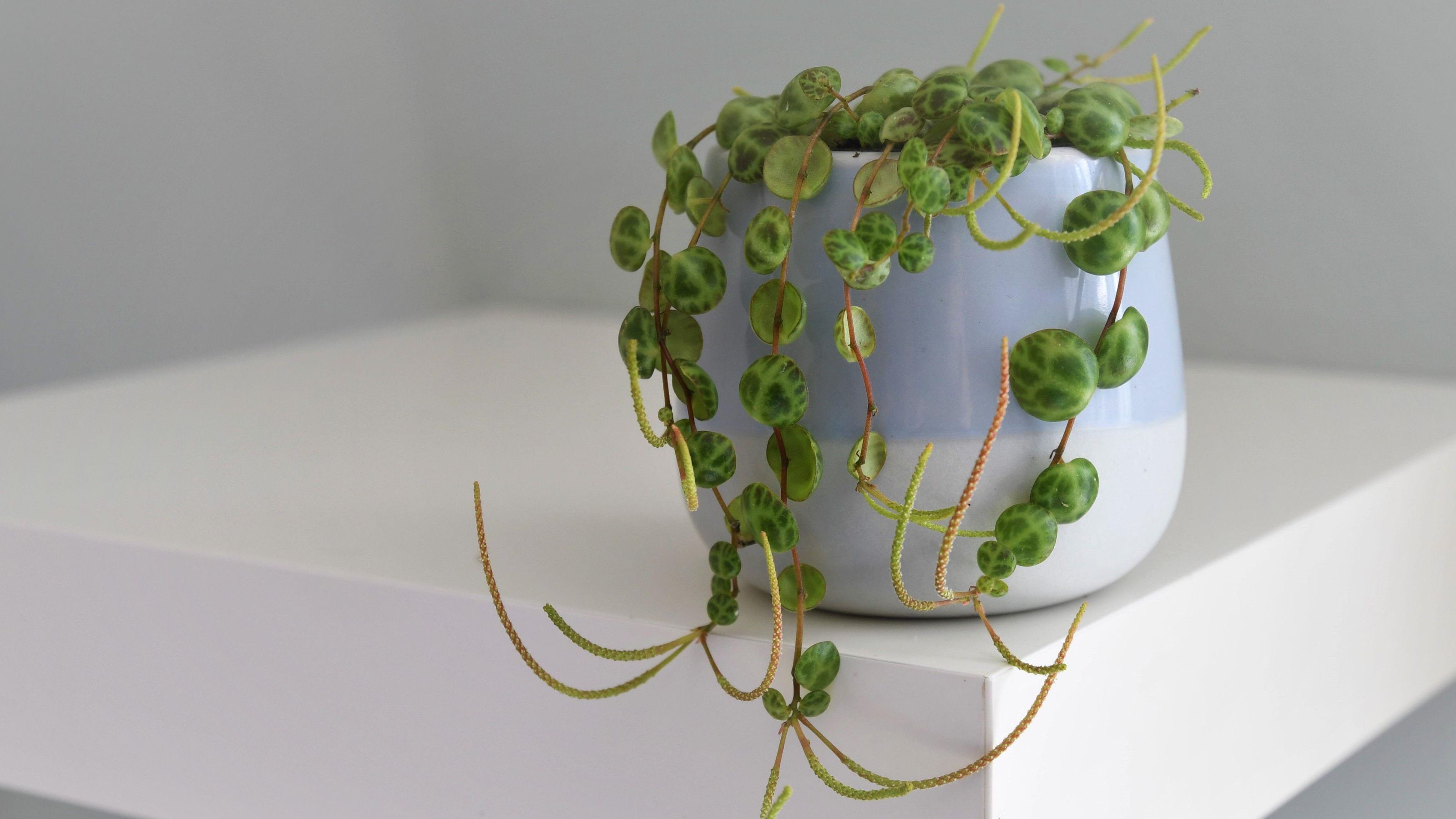

With leaves reminiscent of tiny turtle shells, peperomia prostrata, commonly known as string of turtles, is one of the more underrated houseplants.
A staple of houseplant ideas, a string of turtles shines should be displayed from a shelf or a hanging pot where its beautiful leaves can be truly appreciated.
How to care for a string of turtles
While this year's hottest houseplant trend is to go big, you shouldn't overlook smaller and more dainty plants – they can be just as stunning!
‘When cared for correctly, it will reward you with an unusual-looking flower – typically tall, thin and deep red. They’re not the most aesthetically pleasing flower but still a super fascinating bloom to witness,’ says Sonia Kainth from House of Kojo.

What you will need
- String of Turtles – also known Peperomia Prostrata
- Plastic pot with drainage holes – one size larger than the size of the plant bought
- Decorative pot without holes
- A succulent houseplant fertiliser, for example, Westland 20100353 Cacti & Succulent Plant Feed Concentrate on Amazon
- A trowel
- Succulent compost, such as Westland Succulent/Cacti Potting mix on Amazon
Where to buy
One of the more specialist succulents, string of turtles tend to be bought online rather than in a garden centre. When buying houseplants online, it is important to go to a reputable source. Our guide to the best indoor plants: where to shop online provides a wide range of safe sellers, helping you to make an informed decision.
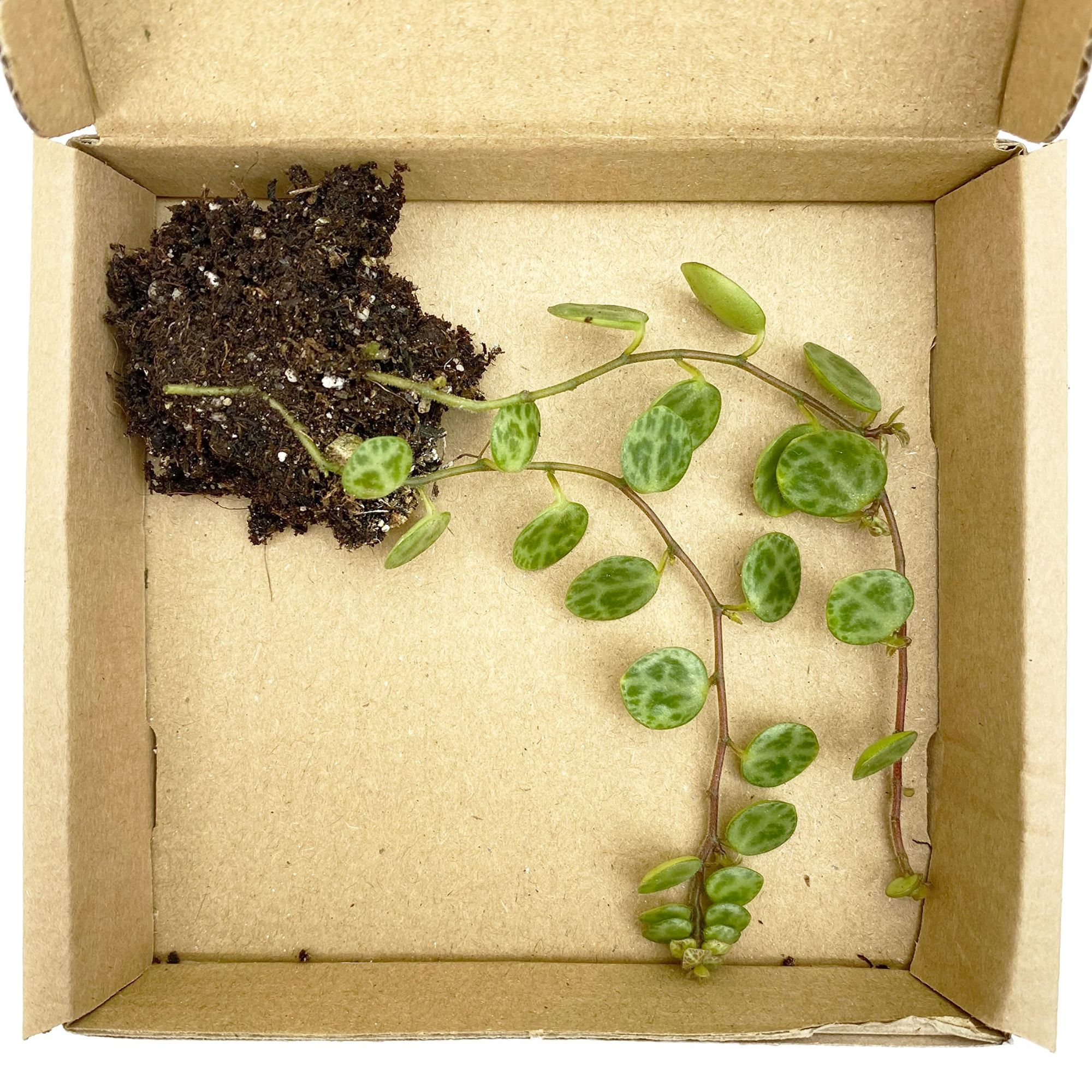
Best for cuttings
The most affordable way of extending your houseplant collection, Cloud Hill Succulents sells rooted and unrooted cuttings that you can grow on at home.
Where should I keep my String of Turtles?
One of the most easy to care for houseplants, string of turtles are a fairly low maintenance houseplant.
‘String of Turtles is a slow-growing semi-succulent, that is native to the tropical regions of South America, often growing epiphytically – growing on tree trunks or sometimes creeping across rocky forest floors,’ says Charly Beckett from Between Two Thorns.
As a result of this, string of turtles thrive in bright but indirect sunlight, such as a north-facing window. Just as with string of pearls care, ensure that the light hits the crown of the plant, this will promote growth. ‘If your plant is in too shady a spot it will receive too little light, it may develop leggy growth stems and be more prone to rot root,’ adds Charly.
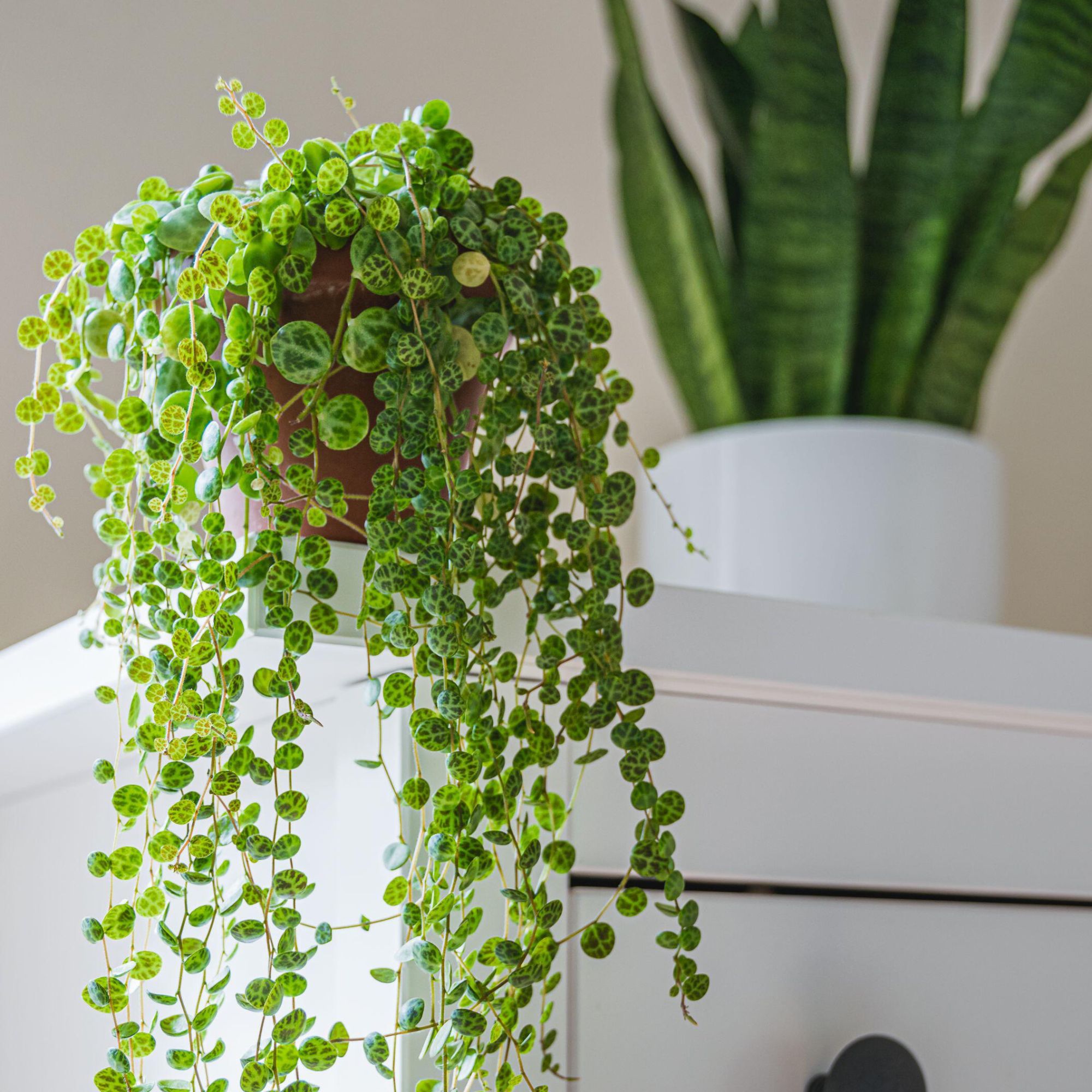
Temperature is also key. According to NASA, tropical rainforests have a daily temperature range of 20°C to 25°C – so replicating this in your home will help your plant thrive.
‘Maintaining a consistent temperature of around 20°C promotes healthy growth,’ says Sonia Kainth. Avoid temperature fluctuations by keeping away from windows or draughty spots. Charly Beckett from Between Two Thorns, also notes, ‘don’t place your plant near a radiator as this can cause browning tips.’
How often should I water my String of Turtles?
String of turtles are often described as semi-succulent as they conserve water in their turtle-patterned leaves. This means the leaves are a brilliant tell as to whether your plant needs watering. If the leaves are plump, then, chances are, the plant doesn’t need watering. Handle with care though, as the leaves are very, very delicate.
A brilliant addition to biophilic design, string of turtles are usually displayed as hanging houseplants.
‘String of Turtles are usually purchased with a small hanging pot with drainage holes, meaning they tend to dry out faster than a regular plant pot of the same size,’ says Andy Little, houseplant buyer at British Garden Centres.
‘It’s a good idea to get into a weekly routine for checking and keeping on top of your watering so that your string of turtles stays happy. A good rule of thumb is to water once the top 1cm layer of compost dries out.’
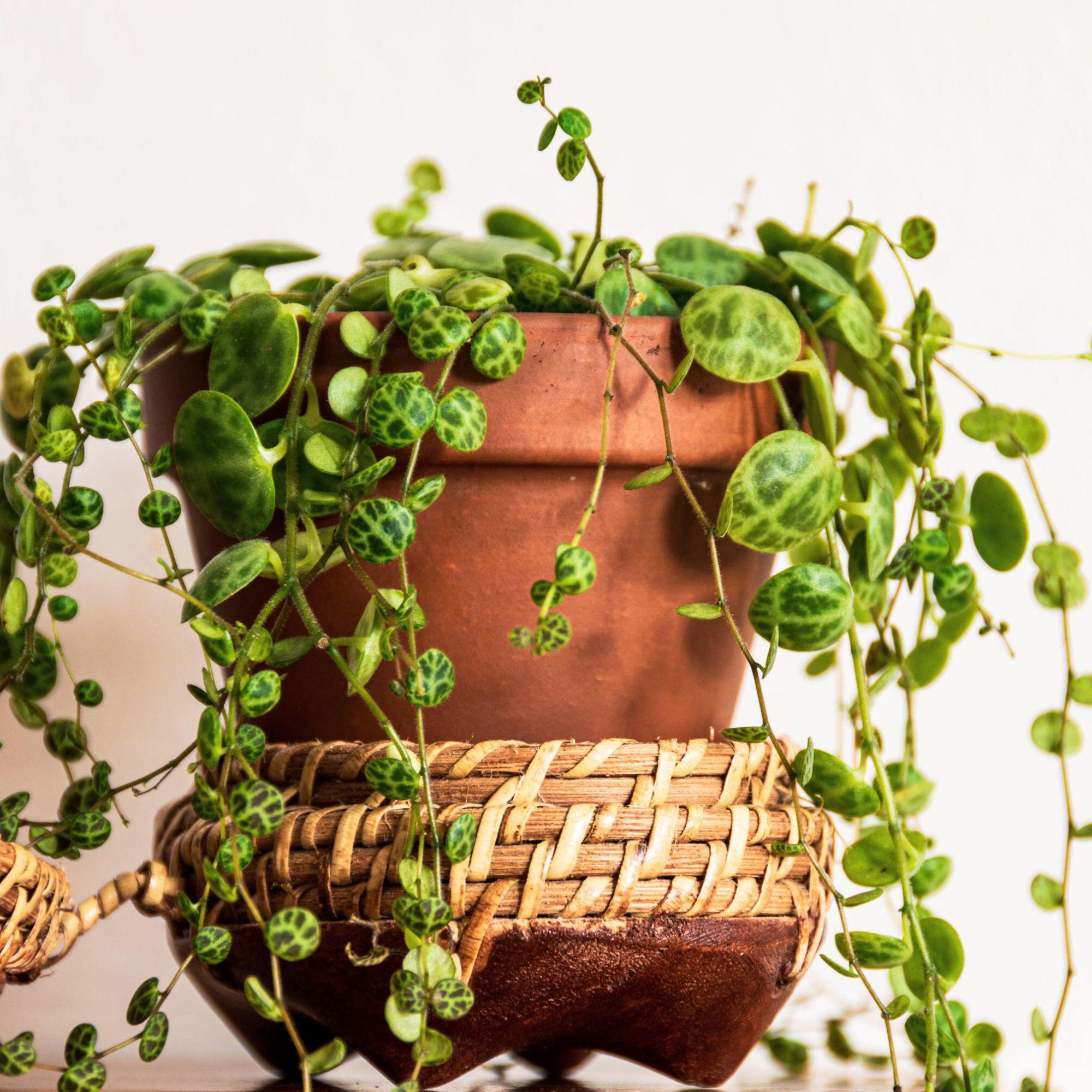
As the top of the soil is covered with foliage, Sonia Kainth advises watering from the bottom to prevent crown rot. To do this, place the pot (with drainage holes) into a sink and fill with lukewarm water until it reaches just below the rim of the pot. Let it soak for about an hour, then remove and let all the water drain away. Then return to its cover pot. ‘Empty the pot after 20 minutes so that the plant isn’t sat in water and risk upsetting the roots,’ adds Andy.
Feed your string of turtles with a liquid feeder throughout the growing months – spring and summer – to encourage growth and occasionally, flowering. Follow the instructions on your specific fertiliser as guidance differs from product to product.
How do I repot my string of turtles?
Due to the fragility of the leaves, repotting must be done with care. ‘Peperomia prostrata require good drainage to prevent their fragile roots from rotting, so use a mix of coco coir, fine pine bark and perlite and plant into a shallow pot,’ says Lisa Price, founder of Root Houseplants.
When choosing a larger pot, opt for a pot that is just one size larger than it is currently in – this will prevent an excess of soil which will retain unneeded water and can cause root rot. Large drainage holes are essential too – pair with a decorative cover that will look pretty and prevent the pot from leaking.
Do I need to prune my string of turtles
‘Regular pruning is not just about maintaining the string of turtles’ appearance; it’s about its health, too. Trimming away elongated stems or yellowing leaves stimulates new growth and prevents diseases,’ explains Emily Lawlor, owner of Happy Houseplants. Pruning will also help the plant direct its energy into growing new stems which will also help it to look fuller.
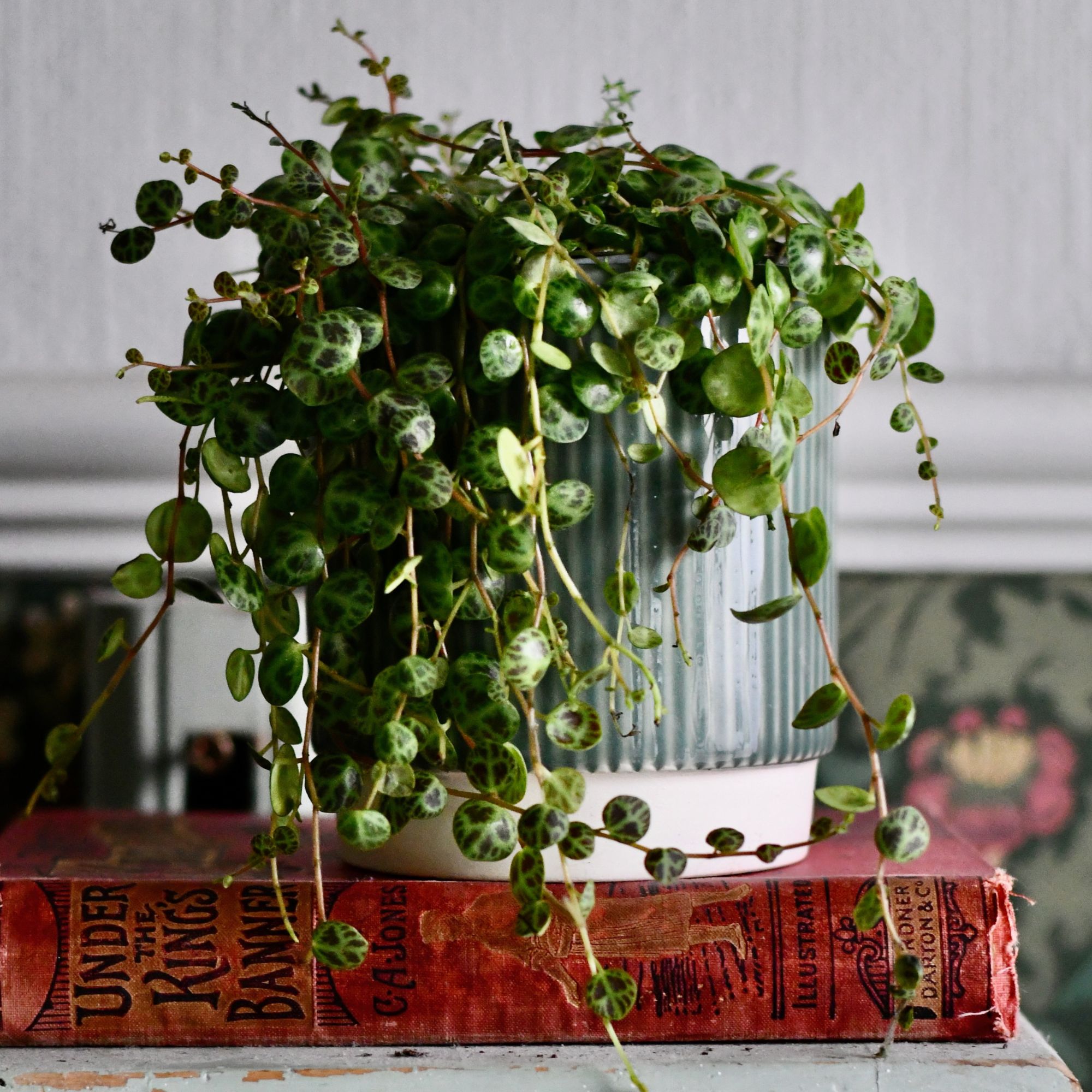
FAQs
Do String of Turtles like to be misted?
Yes, string of turtles like an occasional misting. 'String of turtles will enjoy a bit of extra humidity so make sure you give it a mist (but don't let the leaves stay wet!) or use a humidifier. Make sure not to place your plant near a radiator as this may cause browning tips,' says Charly Beckett from Between Two Thorns.
Why is my String of Turtles losing leaves on top?
If your string of turtles looks bare on top, then it could be a sign of overwatering and excessive moisture on the foliage. ‘Try bottom watering so there isn't any water on the leaves,' says Charly Beckett from Between Two Thorns. 'You can also improve the plant’s look by moving to a brighter spot and taking cuttings to fill it out.'
How do you make String of Turtles fuller?
Pruning can help to make your String of Turtles fuller – it will focus its energy on creating new stems rather than growing existing ones. You can then use these cuttings to fill in the gaps in the top.
If you have a lot of balding at the top of the plant, you can move your string of turtles to a brighter spot
Get the Ideal Home Newsletter
Sign up to our newsletter for style and decor inspiration, house makeovers, project advice and more.

Holly is one of Ideal Home’s content editors. Starting her career in 2018 as a feature writer and sub-editor for Period Living magazine, she has continued this role also adding regular features for Country Homes & Interiors and the Ideal Home website to her roster. Holly has a passion for traditional and country-inspired interiors – especially kitchen design – and is happiest when exploring the countryside and hills of the Lake District. A keen gardener, she is a strong believer that you can never have too many houseplants.
-
 My go-to Ninja coffee machine is on sale for Easter weekend
My go-to Ninja coffee machine is on sale for Easter weekendIt makes coffee shop quality achievable at home
By Molly Cleary
-
 When to plant out annual flowering plants for vibrant, colourful garden borders – and give them the best start, according to experts
When to plant out annual flowering plants for vibrant, colourful garden borders – and give them the best start, according to expertsNot sure when to plant out annual flowering plants? We've got you covered...
By Kayleigh Dray
-
 I'm a kitchen decor editor and didn't like this tableware trend - until I saw H&M Home's designer-look plates
I'm a kitchen decor editor and didn't like this tableware trend - until I saw H&M Home's designer-look platesThey made it easy to justify a new crockery set
By Holly Cockburn
